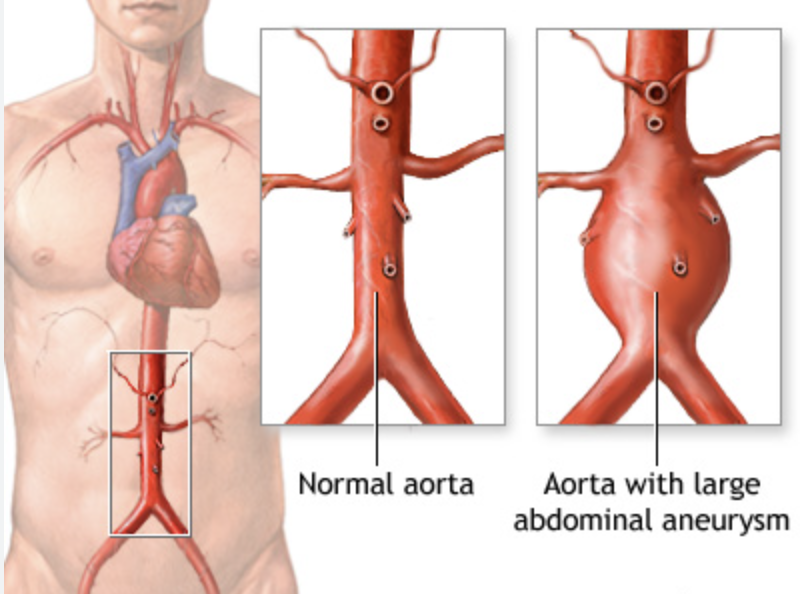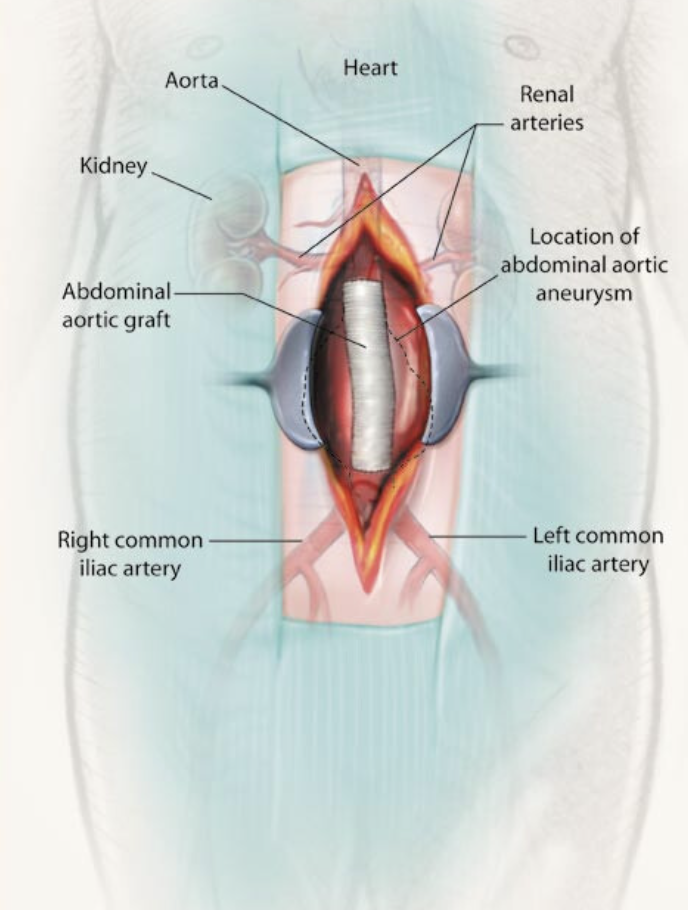Aortic aneurysms are abnormal bulges in the wall of the aorta, the main artery that carries blood from the heart to the rest of the body. These aneurysms can form in different parts of the aorta, most commonly in the abdomen (abdominal aortic aneurysm) or chest (thoracic aortic aneurysm). Several factors increase the risk of developing an aortic aneurysm. These include older age, a history of smoking, high blood pressure, and a family history of the condition. Certain genetic disorders, such as Marfan syndrome or Ehlers-Danlos syndrome, can also contribute to the weakening of the aortic wall. In many cases, aortic aneurysms are found during imaging tests performed for other reasons, as they may not cause symptoms. When symptoms do appear, they may include back or abdominal pain, a noticeable pulsing in the abdomen, or sudden, severe pain, which could indicate a rupture—a life-threatening emergency.
Although the aorta is the most common location for aneurysms, these bulges can also occur in other arteries, such as those in the spleen, kidneys, or lower limbs. The decision on how to treat an aneurysm depends on its size, location, rate of growth, and whether it is causing symptoms. A small, stable aneurysm may be monitored regularly with imaging and managed with medications to control blood pressure and reduce the risk of expansion.
For larger or symptomatic aneurysms, surgery may be necessary. This may involve an open surgical repair or a minimally invasive endovascular procedure. Your vascular specialist will help determine the best treatment option based on your overall health and the specifics of the aneurysm. If you have any symptoms or are at high risk, speak with your doctor about appropriate screening and management.


